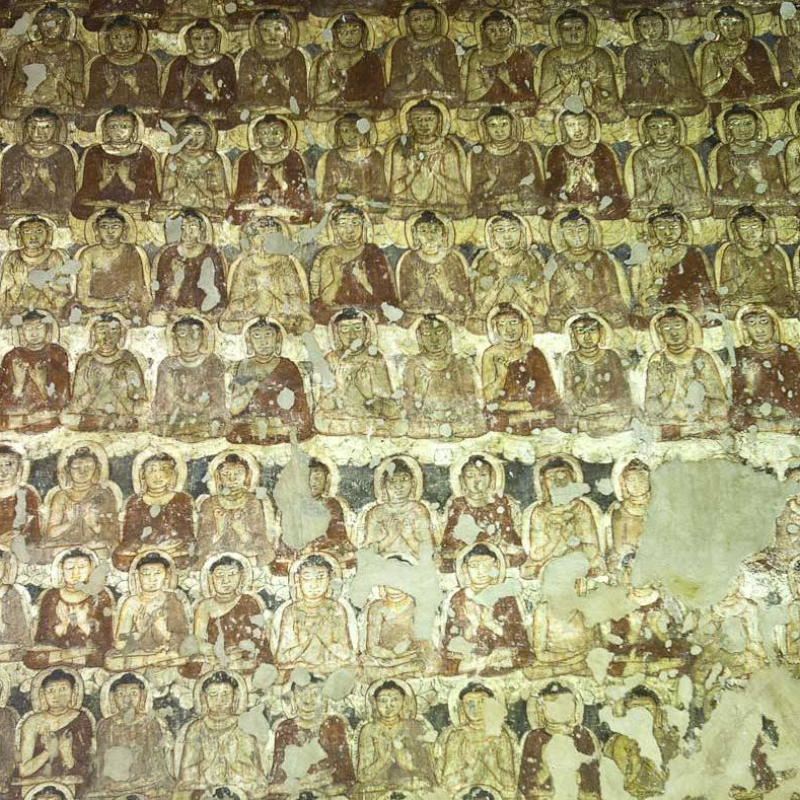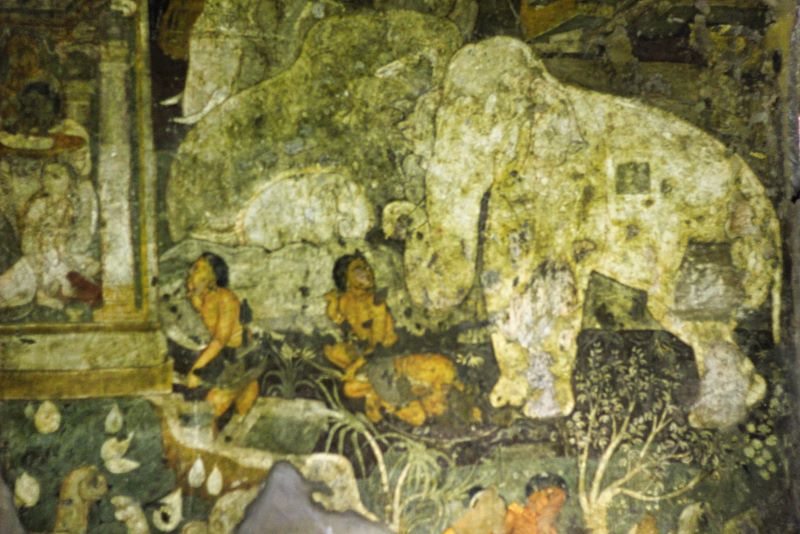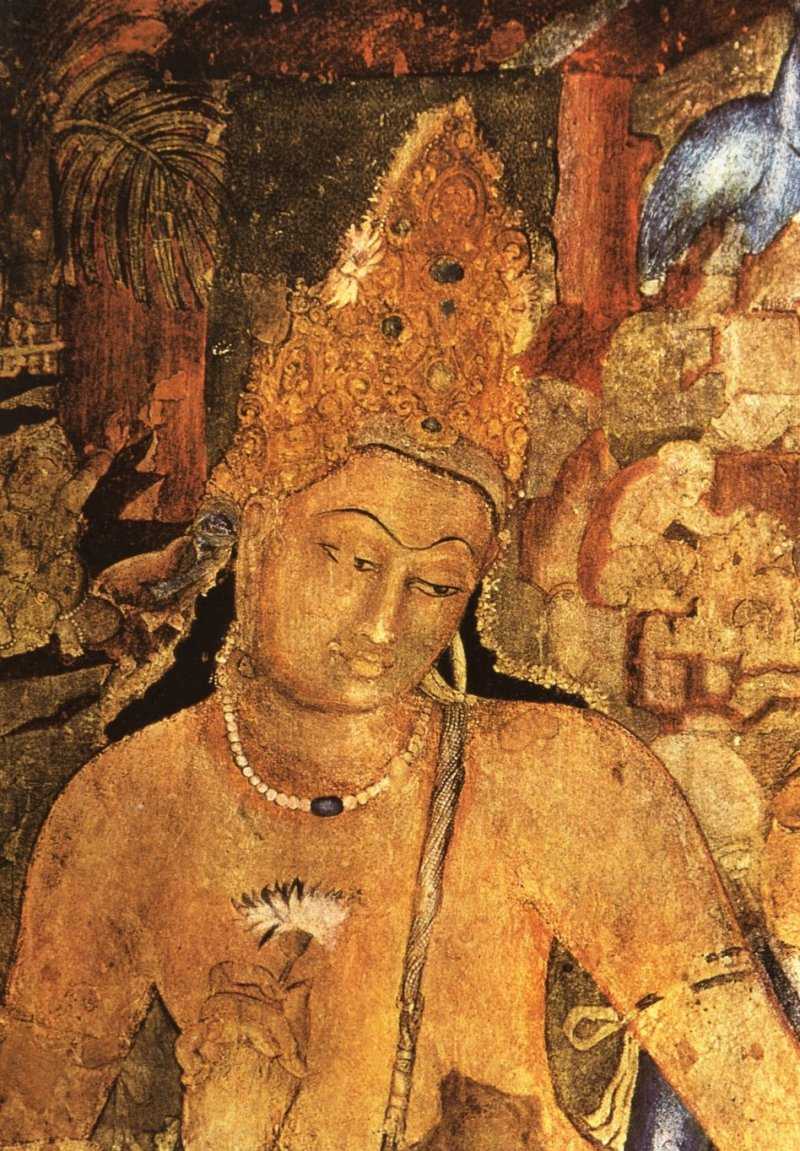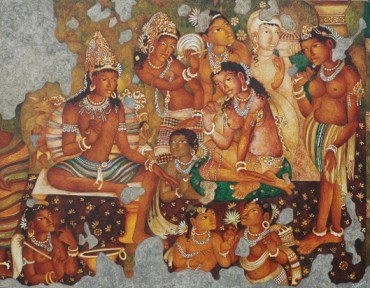The scenes depicted in the Ajanta paintings are mostly didactic devotional and ornamental with scenes from the Jataka stories of the Buddhas former existences as a bodhisattva the life of the Gautama Buddha and those of his veneration. Use of white marble long legs and slender frames human beings as central characters and prominence of kings princess and palaces were the characteristic features of which one of the following ancient art forms of India.
Part of solved Geography questions and answers.

Ajanta paintings depict scenes from the. There are paintings from the earlier as well as the later periods of Ajanta art that depict dance scenes. According to UNESCO these Buddhist religious art form has had a strong influence on Indian Art. The Ajanta wall paintings are famous for their masterful line-work the use of natural pigments the artistry achieved with only primitive tools the sensual forms and the harmony of the overall composition.
There are about 30 rock-cut Buddhist cave monuments which date from the 2nd century BCE to about 480 or 650 CE. The 29 rock-cut caves at Ajanta were built between the 2nd century BCE and the 8th century CEThe caves containing elaborate sculptures and paintings speak about the artistic brilliance of the ancient periodThe fresco paintings on the walls of the Ajanta Caves depict scenes. The Jataka tales are a voluminous body of literature native to India.
They show lucky charms and auspicious scenes from the worlds of the genies and. They depict scenes from Jataka Tales and showcase the life examples and sacrifices made by Buddha in his past incarnations. Raja with his Retinue Cave 10 126.
The paintings of Ajanta were based on Buddhism a religion that was founded by Gautama Buddha in the 6th century BC. The stories in that are associated with previous births of Gautama Buddha in both human and animal form. Alongside the paintings of Buddhist legends which aimed to convey Buddhist ethics the caves also contain scores of non-narrative paintings.
The scenes are full of vitality. Ajanta paintings depict scenes from the Jataka Tales. Many themes depicted are from the Buddhas life and Jataka stories.
There are those which depict the pomp and splendour of the royal courts and the romance of love and the joy of feasting singing and dancing and the man-made world with luxurious products buildings textiles and jewellery. According to UNESCO these are masterpieces of Buddhist religious. The caves are not only an engineering marvel as they are all manually excavated caves and not natural caves.
The paintings of Ajanta depict various themes. Many of them depict the Buddha the Bodhisatvas or other Buddhist themes but the greater portion is made up of images that are only loosely connected to the Buddhist faith. These are expressive paintings that present the emotions through gestures pose and form.
A painting shows Kirtivarman seated in the palace and watching a dance scene with his wife and feudatories. Paintings depict palace scenes. The scenes depict the Buddha as about to renounce the royal life.
The Ajanta cave paintings and rock cut sculptures are described as among the finest surviving examples of ancient Indian art particularly expressive painting that present emotion through gesture pose and form. What Do Ajanta Cave paintings depict. Ajanta Paintings draw a lot of tourists to Ajanta Maharashtra.
Here is an unaffected dancer from pre-Christian era 125. Anyone who has visited Ajanta Caves and seen mural paintings there can but be in the awe of these caves. The paintings are an extension of the mural painting tradition from Ajanta to Badami in south India.
Some depict the world of nature - vegetation and flowers animals and birds. Some of them depict the world of naturevegetation and flowers animals and birds. Ajanta is full of paintings depicting the compassionate Buddha his teachings and his previous births narrated through Jataka stories.
Two of Buddhas greatest teaching was compassion and choosing the middle path. The paintings of Ajanta depict the stories of. Understanding Ajanta Paintings At Cave No 1.
Ajanta paintings depict scenes from the. The walls of the Ajanta caves are decorated with Ajanta paintings depicting the pomp and splendour of the royal courts the romance of love singing and dancing. The end result we must remember would have been viewed in semi-darkness with perhaps just some weak oil lamps to help make out the.
The paintings in cave 1 which according to Spink was commissioned by Harisena himself concentrate on those Jataka tales which show previous lives of the Buddha as a king rather than as deer or elephant or another Jataka animal.

Ajanta Paintings An Insight Sahapedia

Ajanta Cave 17 Mahayana Vihara U A Satish

Pin On Art Of South And Southeast Asia

File Cave 1 Painting Ajanta Maharashtra Jpg Wikimedia Commons

Ellora Verul Caves Maharashtra India Ajanta Caves Beautiful Places Places To See

Cave 2 The Cave Of Birth Showing Scenes Leading To The Birth Of The Buddha Ajanta Caves Aurangabad Maharashtra Ajanta Caves Fresco Mural

Pin On Southasian Religious Classical Miniature Art

The Paintings At Ajanta Amazing Maharashtra

5 Ajanta Caves Paintings You Need To See Holidify
The Ajanta Cave Paintings The Global Dispatches

Artdetails Art Male Figure Mural

Ajanta Cave Paintings Ajanta Cave Paintings Photos Ajanta Cave Details








No comments:
Post a Comment